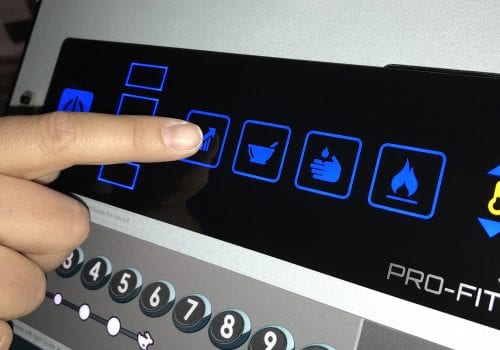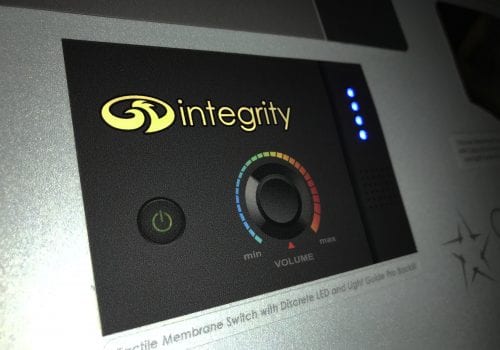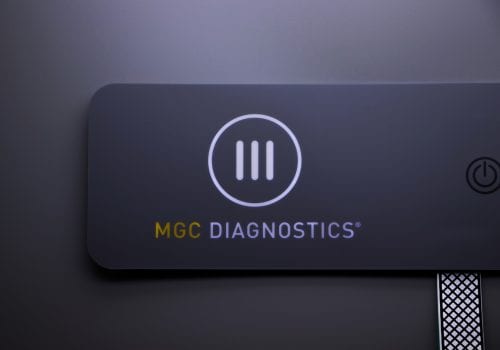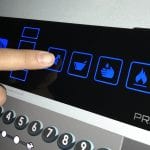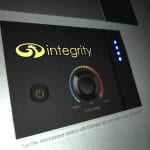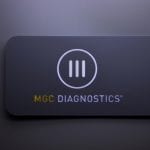Membrane switches provide your end-user with a simple, easy-to-use interface. By adding backlighting to your membrane switch, you can offer your users:
- Crystal-clear feedback
- Low-light operation
- A more aesthetically pleasing interface
- And more
With backlighting, you can make it clear when a user has selected a given option. Colored backlights allow users to understand which option or setting they have chosen. Backlights can also make important elements of the switch (like power buttons) and corporate logos more visible. All of this enhances the user experience.
At General Label, we offer low-profile, powerful, multicolored, and long-lasting lighting for your membrane switch. To improve functionality and customizability, we offer both light-emitting diodes (LEDs) and light guide film (LGF) options for our membrane switches.
Lighting Options
We use LEDs for all of our backlighting. This is primarily done using low-profile, side-fired LEDs. They are sometimes paired with light guide films (LGF) to reduce the profile of the membrane switch and ensure that the light produced is distributed evenly.
Light Emitting Diodes (LED)
We offer sleek, low-profile, side-fired LEDs as backlighting options for our membrane switches. These lights offer:
- A long life (over a decade for most use cases)
- Excellent visibility, even outdoors
- A variety of colors and intensities
- Low voltage power consumption
They’re a low-cost lighting solution, both because of the materials used and because of their low energy consumption. Our side-fired LEDs have a relatively small effect on the size and weight of the membrane switch, making them a viable solution for products with incredibly tight tolerances.
Light Guide Film (LGF)
Light guide films are carefully engineered films made out of optical grade polymers. They’re thin and flexible, and designed to distribute light throughout a membrane switch, changing its intensity and moving it to the desired areas.
Through the use of light guide film, we can reduce the number of LEDs used in a membrane switch, significantly reducing its profile and weight. These films also ensure an even distribution of light across desired surfaces, so that all of the buttons on your membrane switch can be easily identified, even in low-light conditions.
LGFs can be used to eliminate light leakage and hot spots—perfect for products with tight temperature tolerances.
Applications of Backlit Membrane Switches
Backlit membrane switches are used across all industries, including:
- Industrial
- Electronic
- Automotive
- Military
- Medical
- Agriculture
- Appliances
- Consumer electronics
- Transportation
- Aerospace
- Oil and Gas
The reasons for using backlit membrane switches are varied, but they usually fall into three categories:
- The end product will be used in low-light scenarios
- The lights are used to provide additional feedback to the user
- The lights are used to make certain design features more prominent
As such, backlit membrane switches are most often used on consumer electronics and appliances, and in places where low-light environments are common, such as in the medical and military industries.
Realistically, however, the additional user feedback and better visibility of backlit membrane switches make them a common part for products across every industry.
Benefits of Backlighting Membrane Switches
Backlit membrane switches offer several advantages when compared to other user interfaces. These include:
- Low cost: Backlit membrane switches are a relatively inexpensive solution for user interfaces when compared to other backlit interfaces like touchscreens.
- High durability: Our lighting lasts over a decade for most use cases, and our membrane switches are rated for a million actuations or more.
- A better user experience: Backlit membrane switches provide better user feedback with colors, flashing lights, and more.
- Low light visibility: Our membrane switches can be used indoors and outdoors—the backlighting means they can be used in low-light situations, too.
- Customizability: With a wide array of colors and light intensities to choose from, and thin profiles offered through the use of LGFs, we can design a backlit membrane switch for almost any use case you can imagine.
- Safety: In some scenarios, it’s essential to provide users with feedback without creating noise. From military devices to equipment used in noisy manufacturing plants, backlit membrane switches provide essential information without creating noise.
Structure of Backlit Membrane Switches
Backlit membrane switches are built in layers. Typical layers and components include:
- The graphic overlay the user interfaces with
- The adhesive to bind the overlay to the top circuit layer
- The circuit layer
- A spacer
- Light guide film
- LEDs
- A bottom circuit layer
- A rear adhesive layer
- Connectors, tails, and terminals
Encapsulants, adhesives, and other materials are used to ensure that the membrane switch is resistant to abrasion, chemicals, and penetration by dust and water. Our backlit membrane switches can be built to provide up to IP67 protection.
